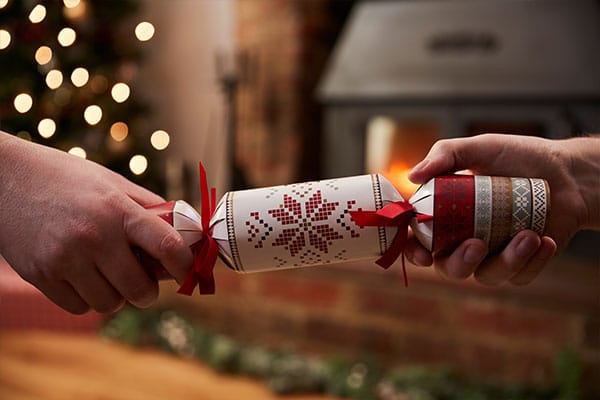When you hear the words Christmas Crackers, what do you think about it?
When I first heard about this Christmas tradition, my mind went to a tray of summer sausage, cheese, and crackers. However, when I looked into the tradition further, I learned that this United Kingdom tradition is quirky with a fun history.
Origins
Christmas Crackers were first made by Tom Smith around 1845. Mr. Smith was a London candy maker who had been influenced by the French 'bon-bon' sweets during a visit in 1840. He would spend years trying to sell these sorts of treats in England, but he did not find much success.
Over a decade passed by when Tom came up with a different idea that drew upon past influences. He called this treat the "Bangs of Expectation!"
Soon, a legend would emerge of how Tom came up with his new idea.
He was sitting in front of his log fire and could see and hear the crackling of the fire. At that point, his brain began to wander, and he thought it would be interesting if he could create a sweet toy that would open with a crackle then their wrappers were pulled in half. Thus, Christmas Crackers were born!
Well, not really. That story is more legend than anything, but it does add to its back story.
The truth is that Tom actually bought the recipe for the small cracks and bangs from a fireworks company, and he used that innovation to launch his new product.
Tom's idea would be expanded on after his death when his sons traveled the world looking for new ideas to put into these fun Christmas crackers. The company would explode with new ideas, and these crackers were made for bachelors, spinsters, decorations for the Christmas Tree, and everything in between. These fun treats would become a staple in England and are still made for the Royal Family every Christmas!

Christmas Crackers have changed through the years and are now short cardboard tubes wrapped in colorful paper. They are placed next to each plate at the dinner table, and when they are pulled, a bunch of party accessories falls out of the cracker.
Some have used these crackers to memorialize the Wise Men who came to visit Jesus. Perhaps that is true, but more than likely, it is just a fun tradition that, over time, has gained steam and popularity throughout the United Kingdom.
I have to admit. Like the Yule Log, I do not see this tradition in the United States. I am sure someone celebrates it here, and it will be interesting when my family tries it this year!
